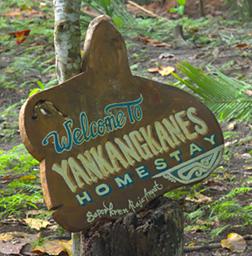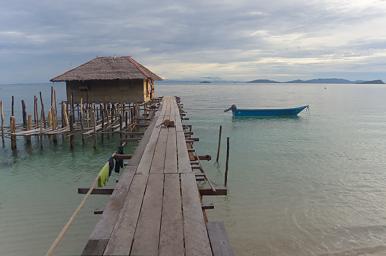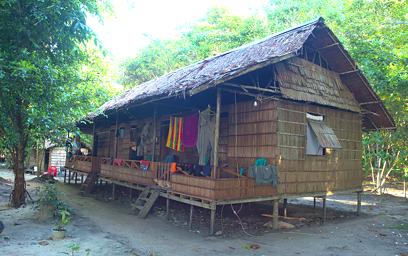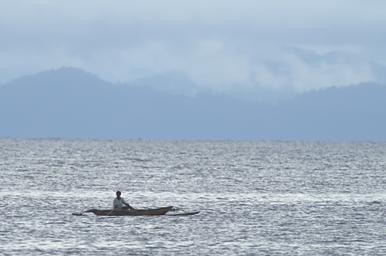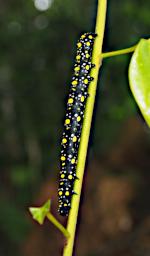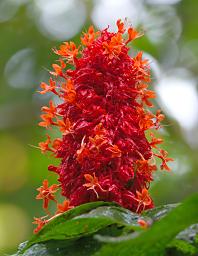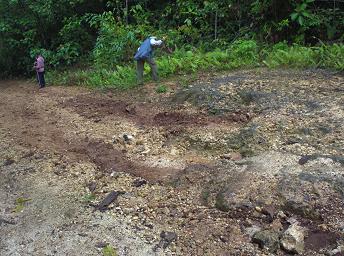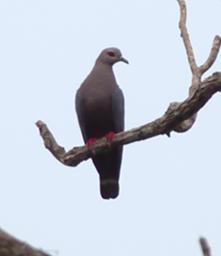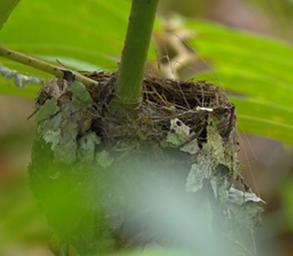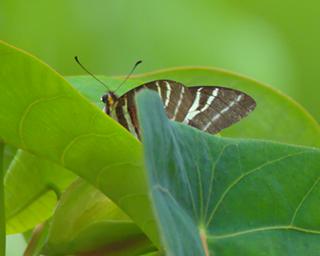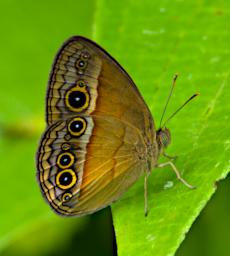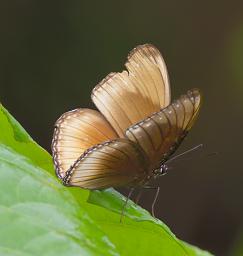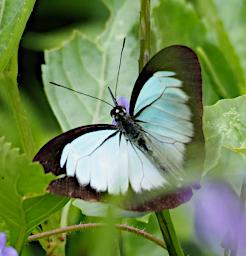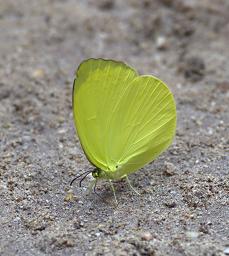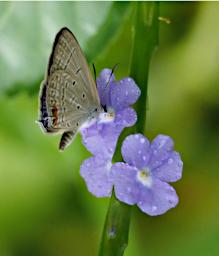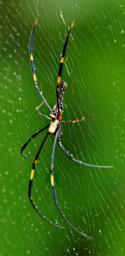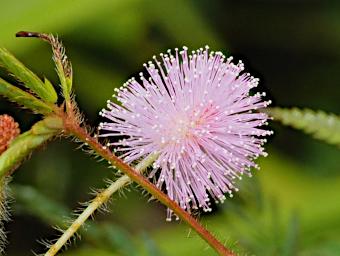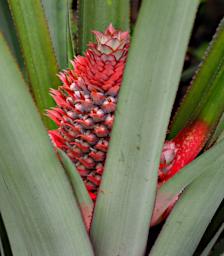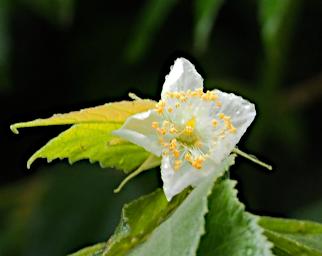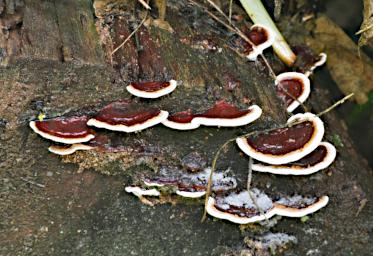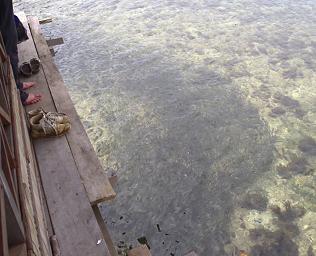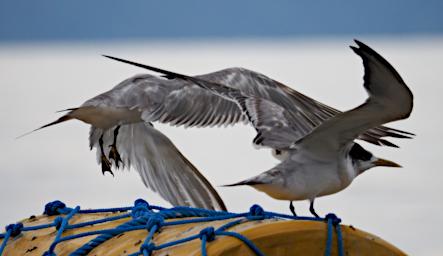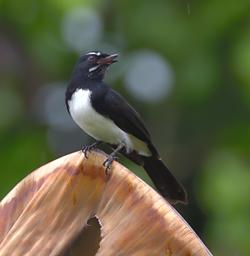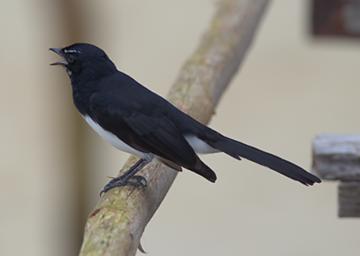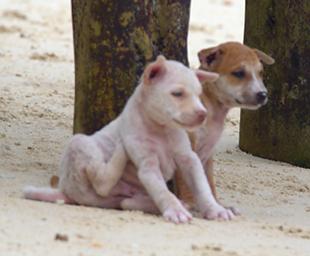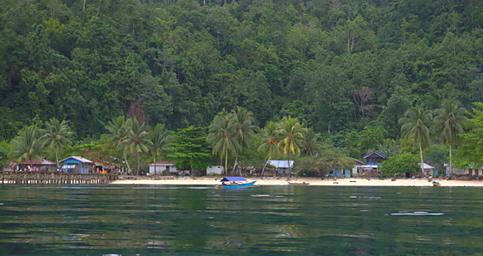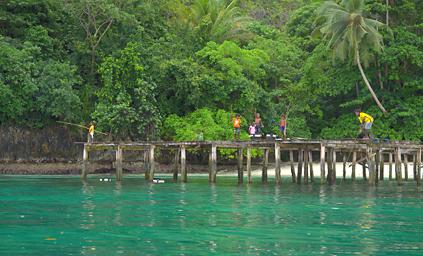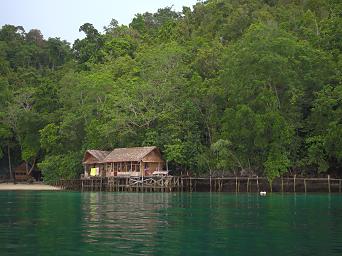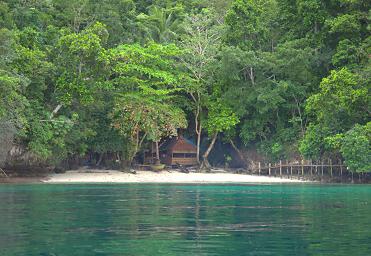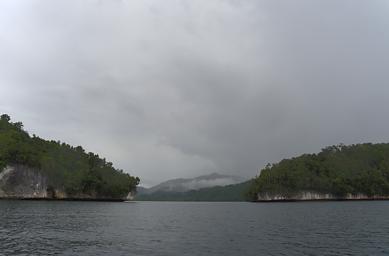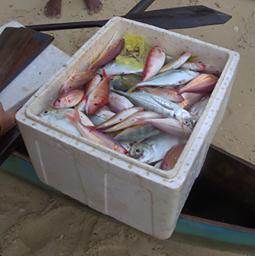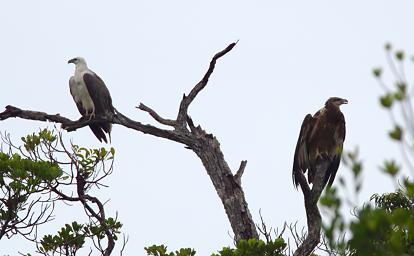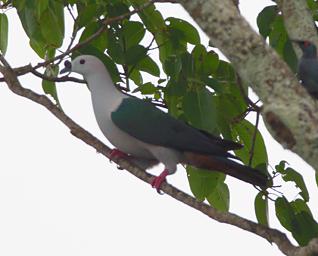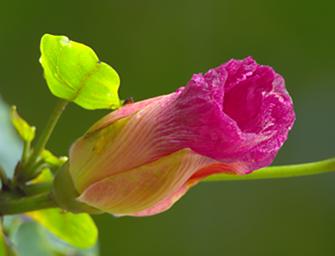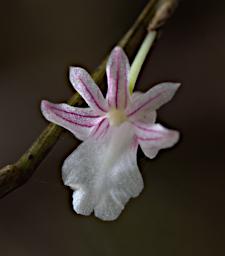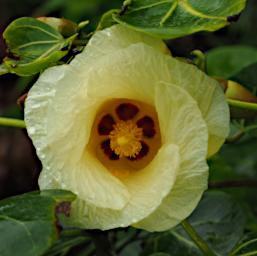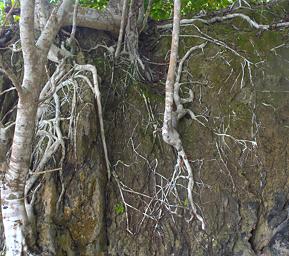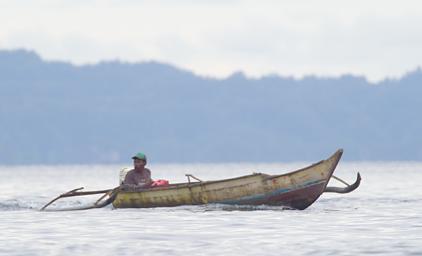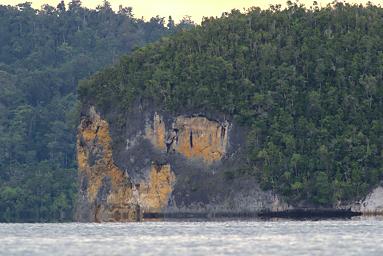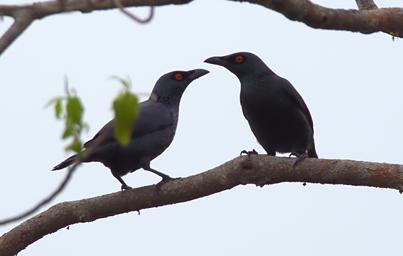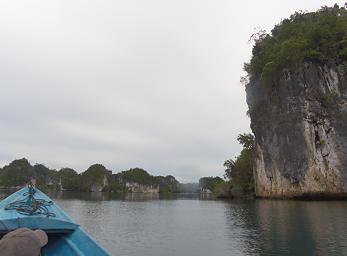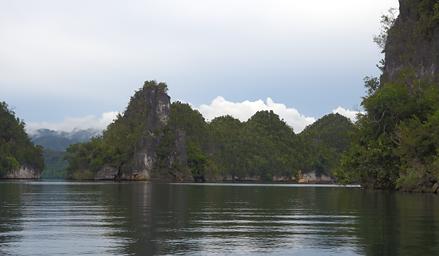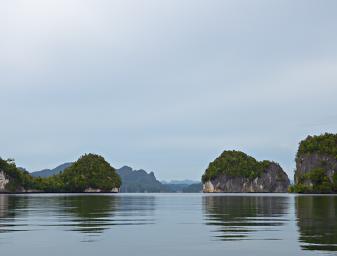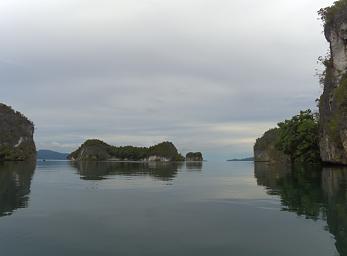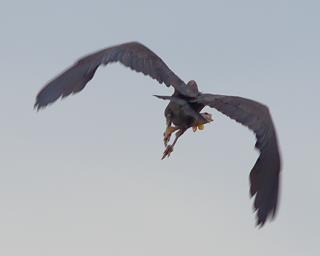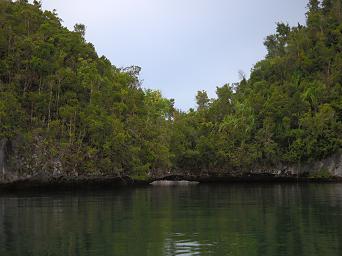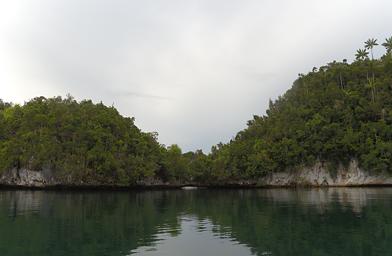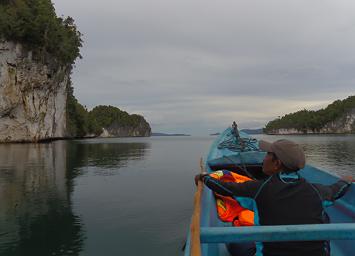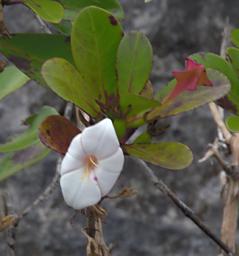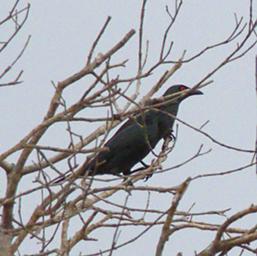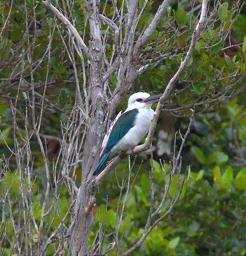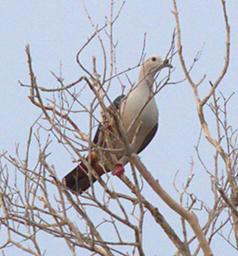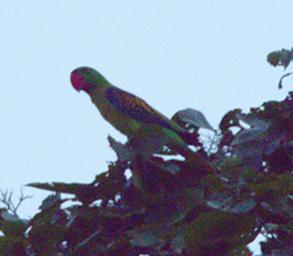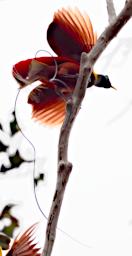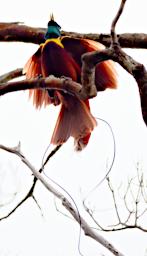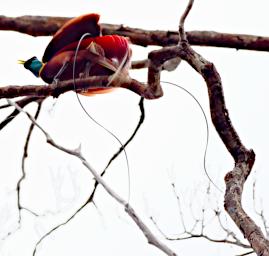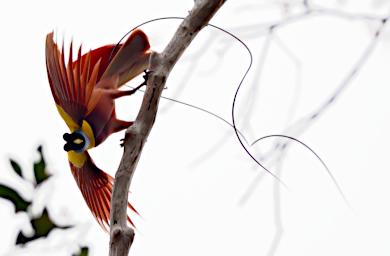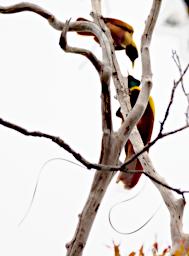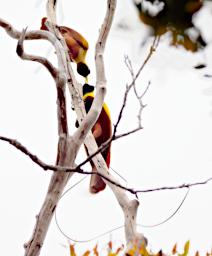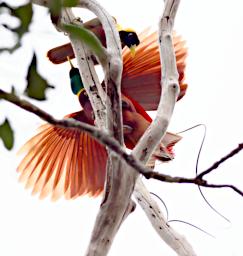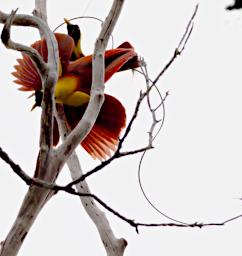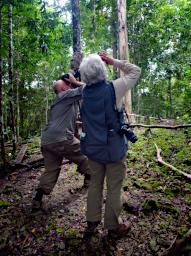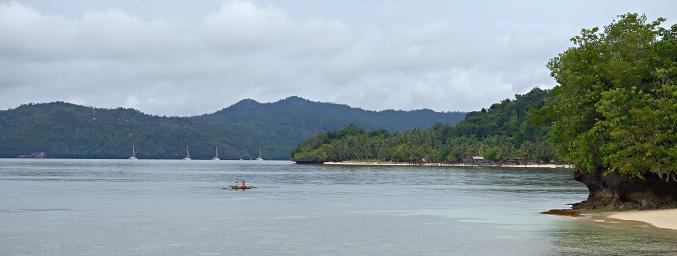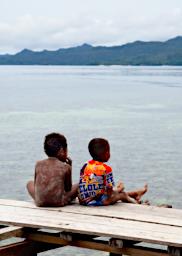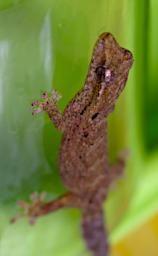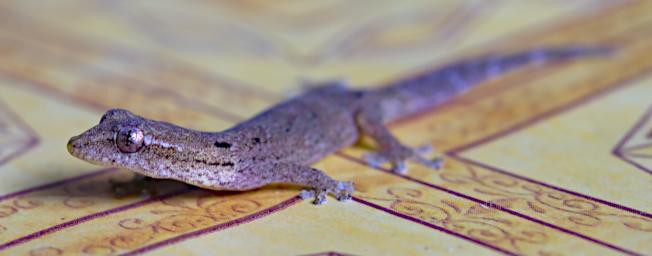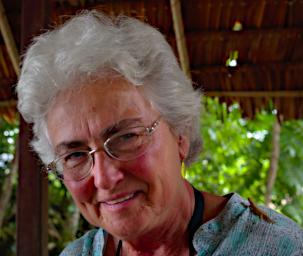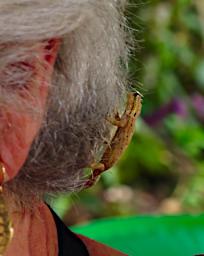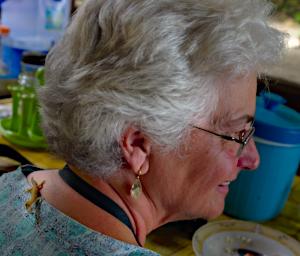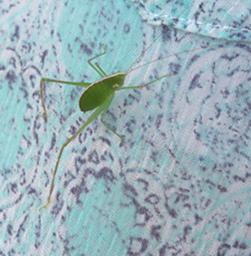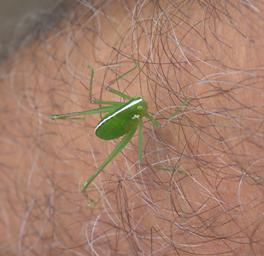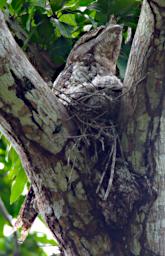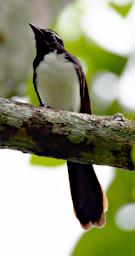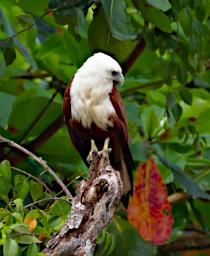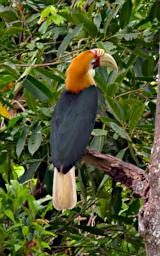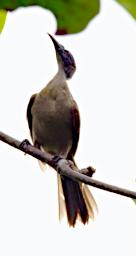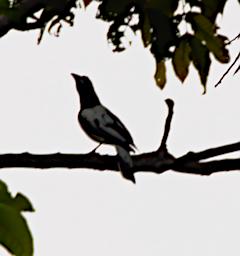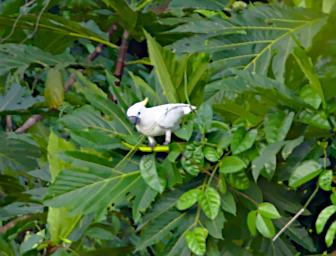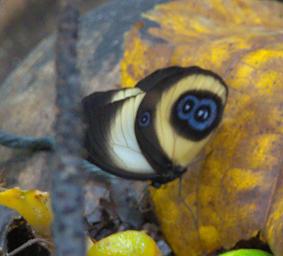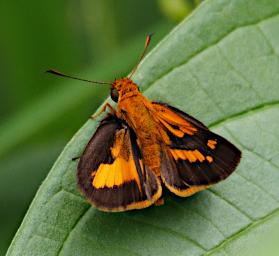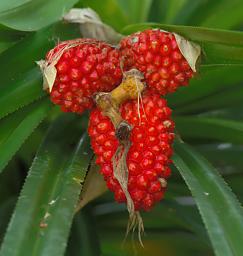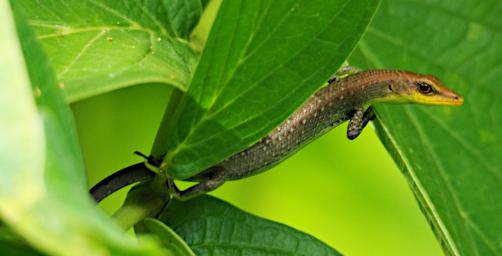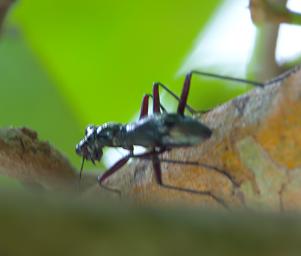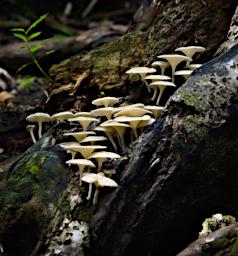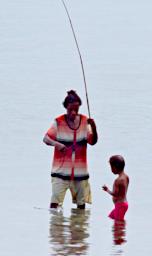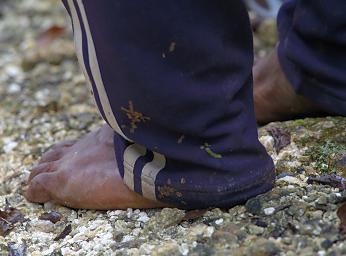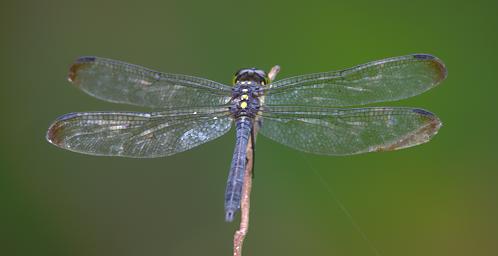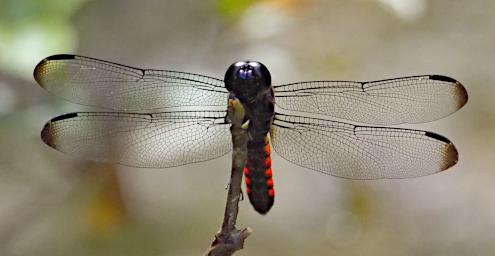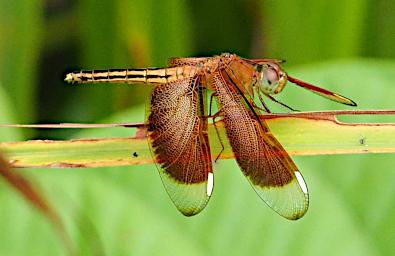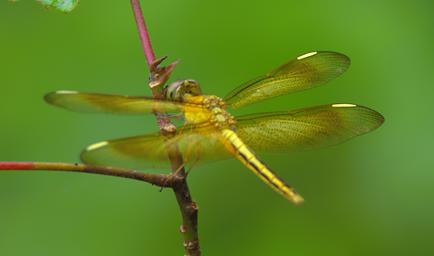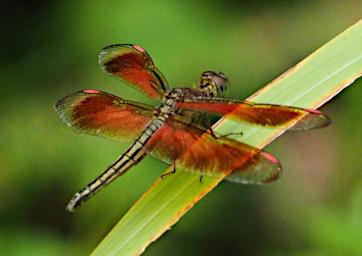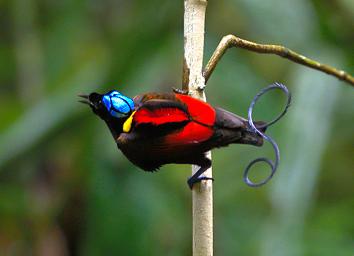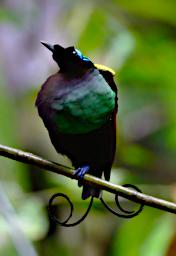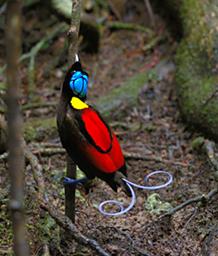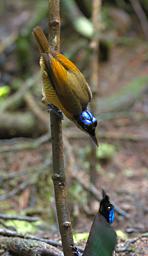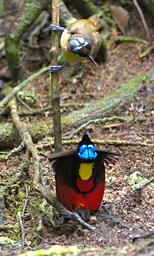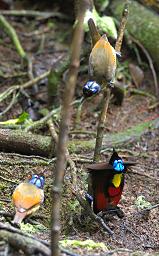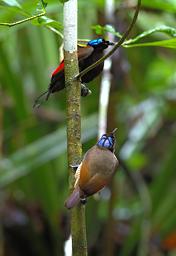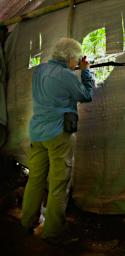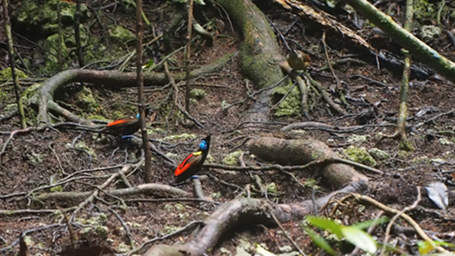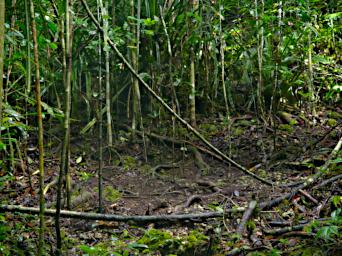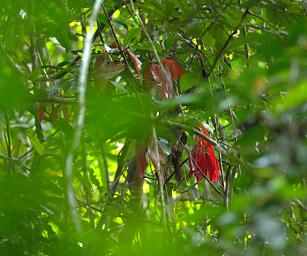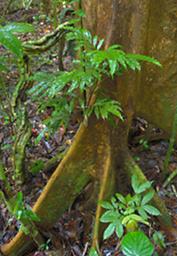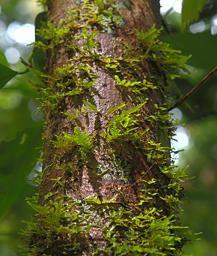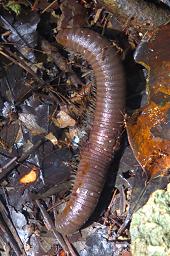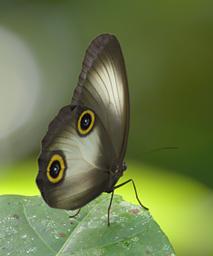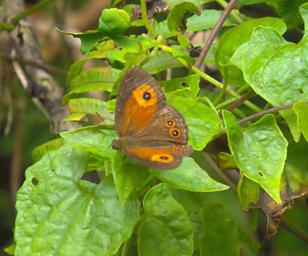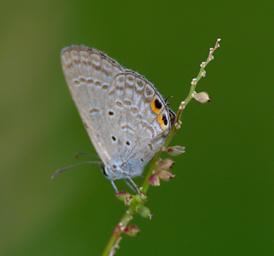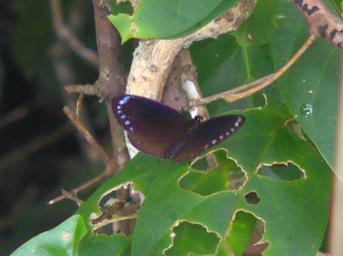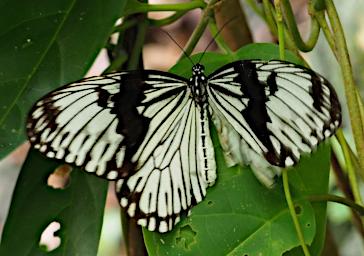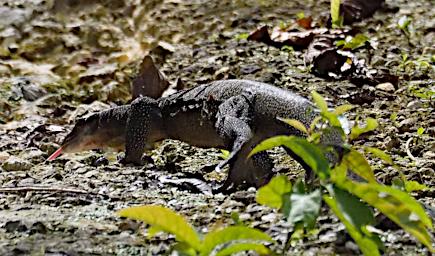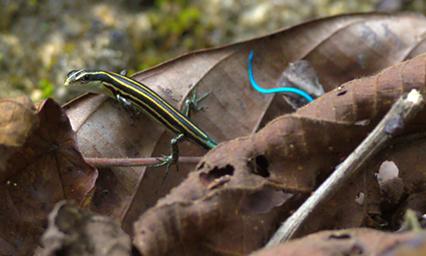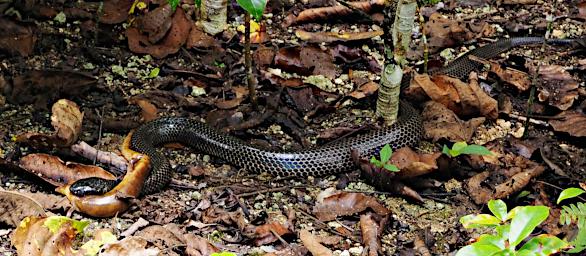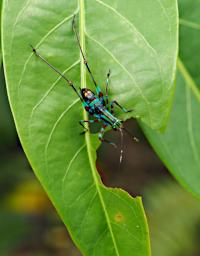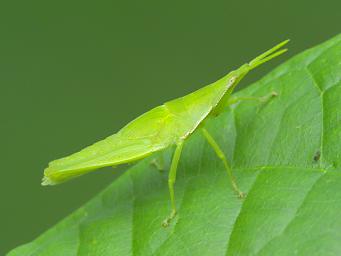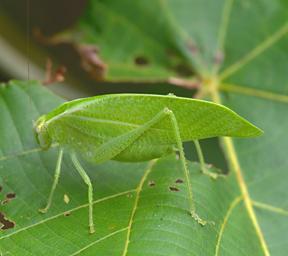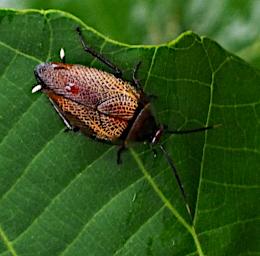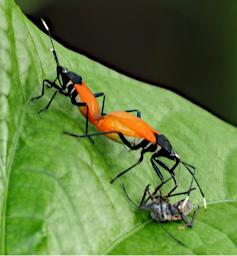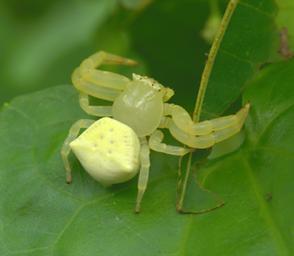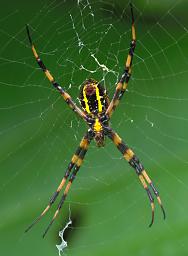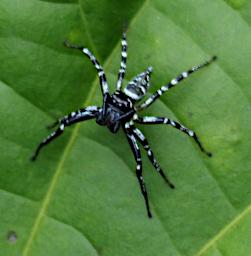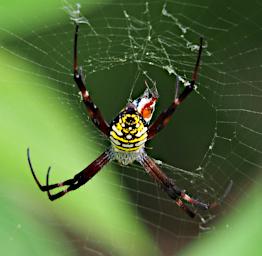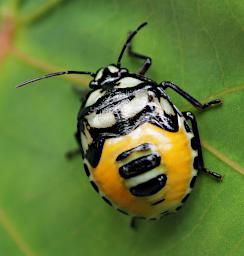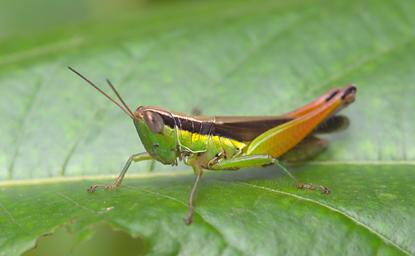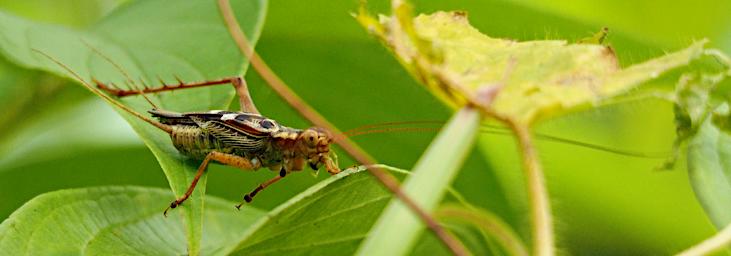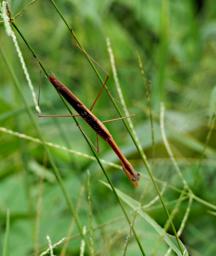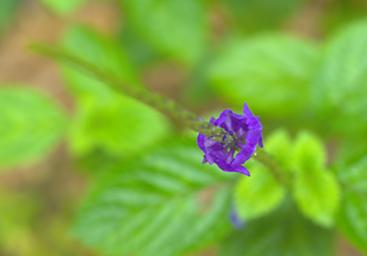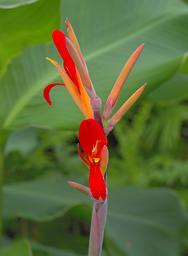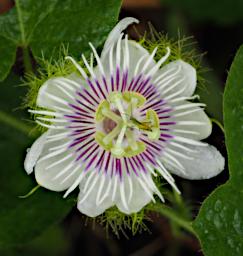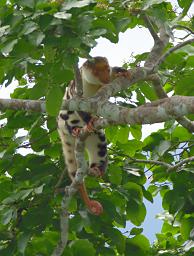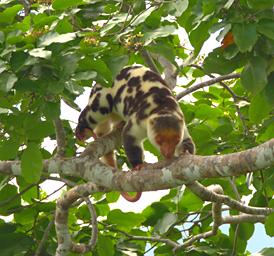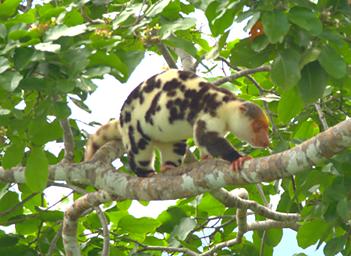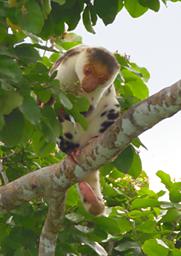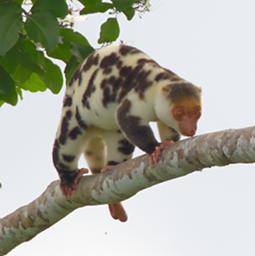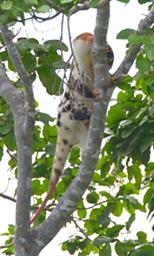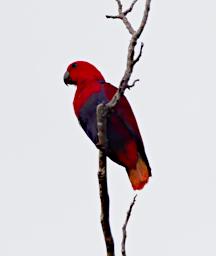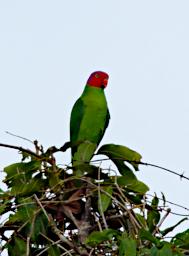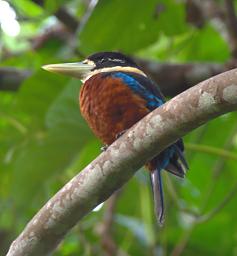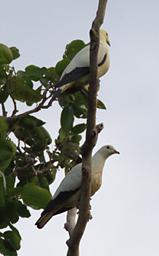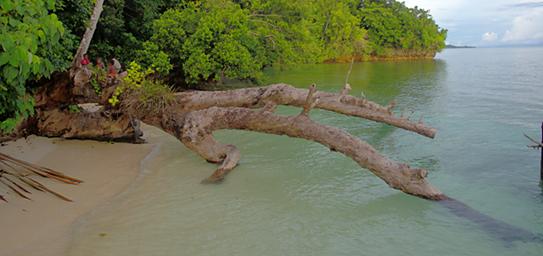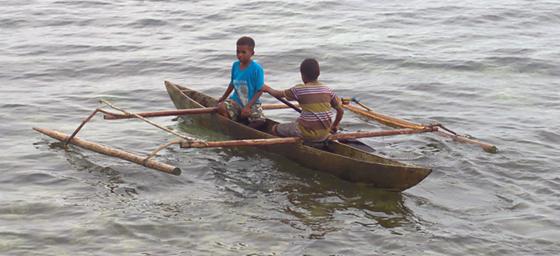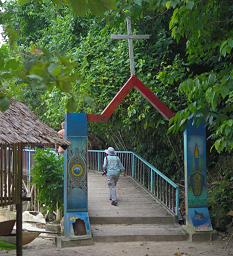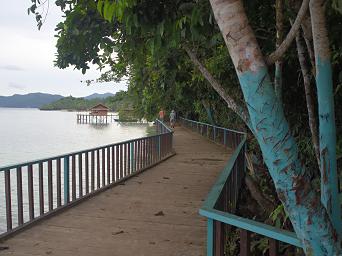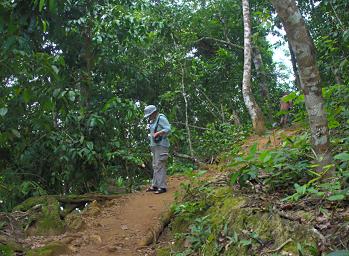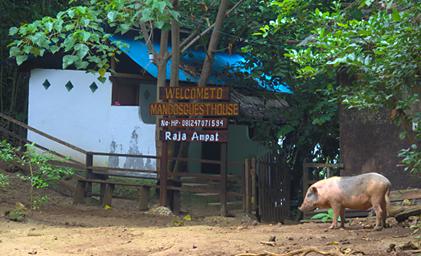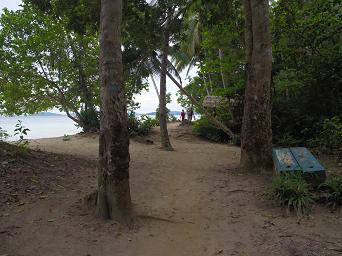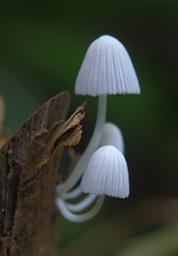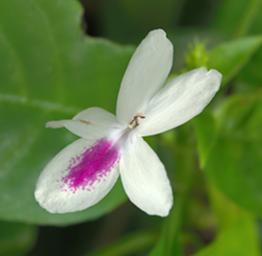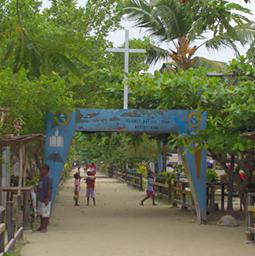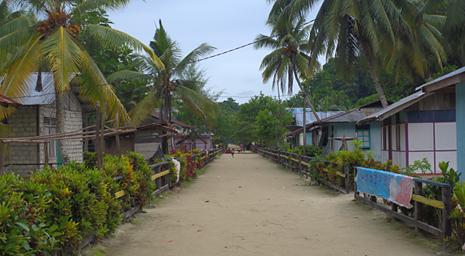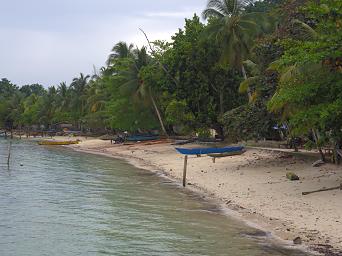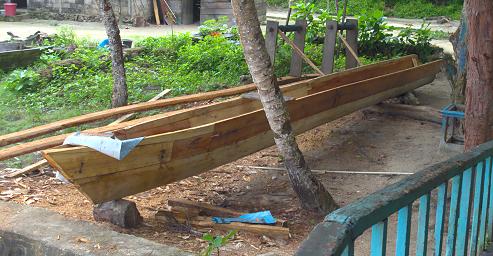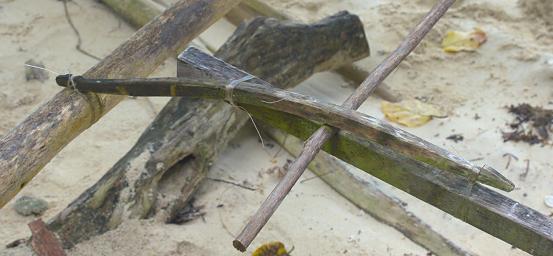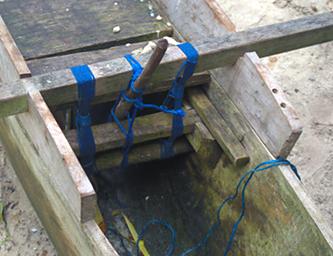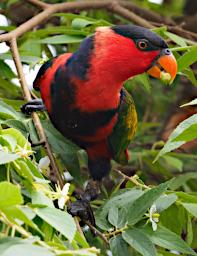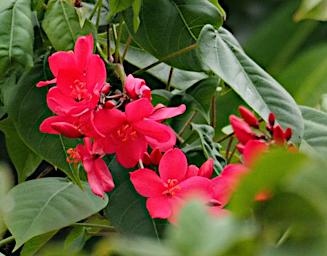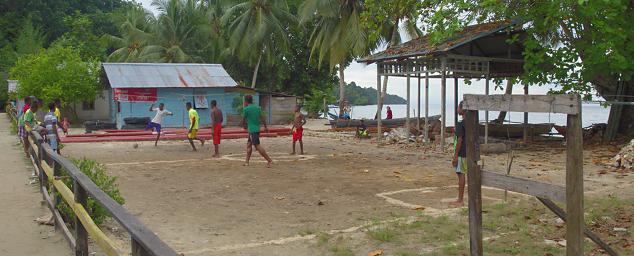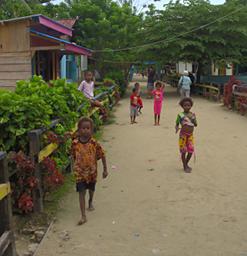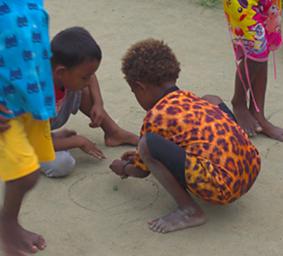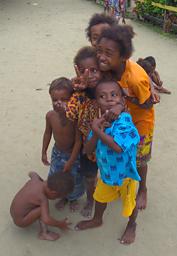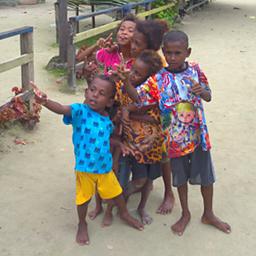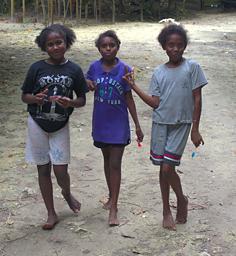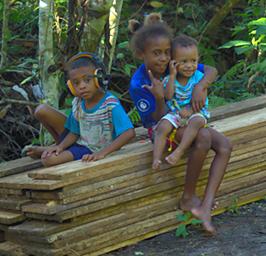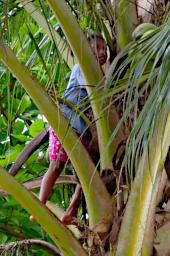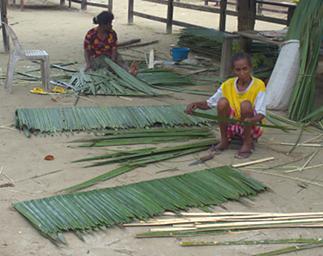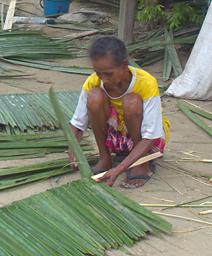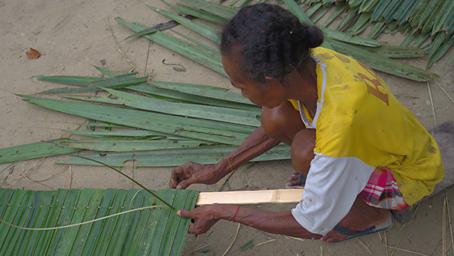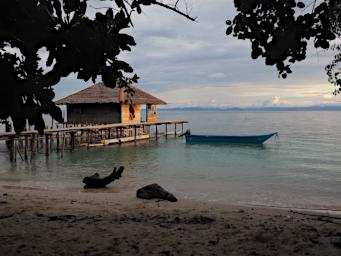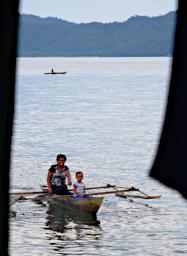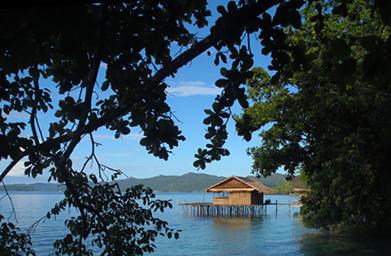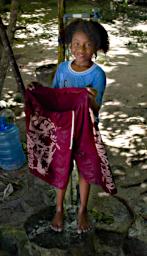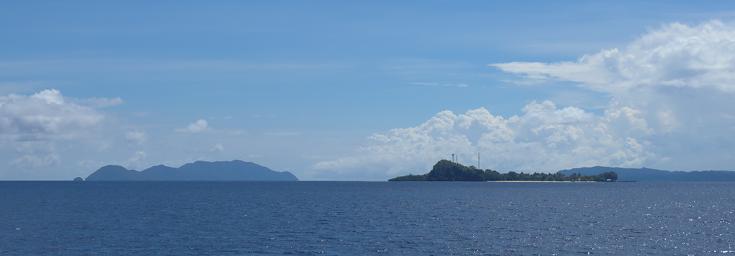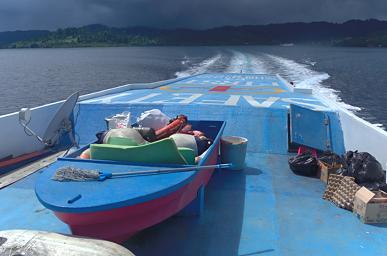A Search for Birds of Paradise
in Waigeo, West Papua, Indonesia
(and other Creatures Great and Small)
September 2017
Click on any image for a larger view;
Contact garya at this domain if you would like the high quality image for printing
We hooked up with Ram, Dona's nephew, and Mehd Halaouate, our guide, about midnight at the Batik Air gate in Jakarta.
Our plane was a bit late taking off for the four hour flight to Sorong, and we needed to make a connection with a ferry to Waisai on the island of Waigeo in the Raja Ampat archipelago. We landed late, in pouring rain. According to the ferry schedule it had already left. But things don't always leave on time. Mehd secured us transport to the dock where he paid off the appropriate people and we drove onto the dock and up to the boat, and we schlepped our bags and bodies aboard.
We were on the fast ferry, and after an hour or so we landed on Waigeo. It had stopped raining by the time we docked. Mehd rounded up transportation and we headed for our homestay, stopping along the way for birds.
The village of Saporkren is at the end of the road. Actually, it is about half a kilometer past the end of the road. There is a bus turn-around at the end of the road, and shelters for people to wait out the rain. Children heading for school or others wanting transport to Waisai walk from the village itself on a path by the sea; part of it is a wooden walkway built along a short limestone cliff.
Our homestay, Yankangkanes, was a few hundred yards before the end of the road. (Interestingly, three of the images on that Yankangkanes link show two bungalows at the end of the pier. On our visit, there was only one, with another being constructed on the same side of the pier as the existing one, closer to the beach. The text with the details about the rooms also indicates only two rooms over the water, and there are two rooms in the one bungalow. Strange. I wonder how / why the first one was removed / destroyed.)
We were supposed to have two rooms out on the water, but when we arrived one was already occupied by a pleasant couple from Belgium. Ram and Mehd graciously gave Dona and me the room over the water; they stayed in separate rooms in the owner's bungalow on the beach.
We dropped off our stuff, rested a bit, and then took a walk around the neighborhood looking for birds. "A walk around the neighborhood looking for birds" means "up the hill." Waigeo is an island of rugged terrain, and the road to Saporkren from Waisai winds up and down and around; the last bit is a fairly steep grade down to the shore, so the first thing you encounter when heading out if you're not heading into the village or by boat is uphill.
Mehd arranged for a 4wd vehicle to take us to the hide for the Wilson's Bird of Paradise early the next morning. We were up at 04:00; the vehicle arrived late. We loaded up and headed up the hill, then turned off on a dirt/rock side road that continued upward. After a bit we got to a steep place where the road had been eroded on the downhill side of a big rock, and our driver was unable to negotiate up it. He was reluctant to get far enough off to the right side of the road and kept bottoming out. Then he would back down and do the same thing again.
We got out, turned on our headlamps and started walking. The original plan had been to go to the "best" hide for the Wilson's, but it was quite a ways and it would be too late by the time we got there so we turned off at another one. We arrived about 08:00. It had been raining all night and was still raining lightly. The bird didn't show, or else we had missed him earlier.
Mehd told us there were only four 4wd vehicles on the island, and he would get a different one the next day.
We walked home, birding along the way. Mehd was great at searching out other things besides birds, and we found some great butterflies as well. It was a bit frustrating for me because my glasses kept fogging up and I had trouble finding birds that were some distance away but more or less in plain sight. We found some nests but the birds weren't sitting on them; unfortunately, they may have abandoned them. I hope not.
There was a big school of small fish underneath our bungalow when we got back. While Dona took a nap I went snorkling. Unfortunately I don't have an underwater housing for my camera. Mehd later said he usually brings a cheap underwater point and shoot that clients can put their own cards in, but he didn't have it this time. Bummer. That is something maybe we should get and bring with us. There weren't as many fish as I had expected, and it was a cloudy day so it wasn't particularly colorful. I found blue starfish, a few smaller parrotfish, and numerous smaller things that were familiar from my diving in the Caribbean but slightly different.
I did see one really cool thing I have no idea what it was — they looked kind of like a black anemone attached to a black spider about 7 cm across; sitting on top of coral. They had pencil-lead thick limb-like upper apendages raised like hoops, making a large ball or open vase about 12 cm in diameter above the body. It looked like one of those single-beater mix-masters turned upside down, with the mixer whip pointing up. Below the body I think they had eight or ten legs. On subsequent observations they had moved to a different spot on the coral, so they were definitely some kind of animal... I am having difficulty identifying what they are because I can't figure out the right search terms to look them up. They don't appear to be either sea-spiders or anemones.
With all those fish around there had to be seabirds; there were some terns hanging out on a buoy a ways farther out.
In the afternoon we hopped in a small boat with an outboard and headed up the inlet. The island of Waigeo is split almost in half by an inlet from the Dampier Strait (also known as Augusta's Strait). Saporkren village is located near the strait itself; we headed up to the far end. Along the way we glimpsed numerous small dwellings, presumably occupied by people supporting themselves with subsistence fishing. The farther up the inlet we went, the less inhabited it appeared. Most of these places were accessible only by boat.
We stopped at a small island where Mehd said there was good snorkeling. The last time he had been there it was unoccupied. Now, however, there was a lone woman living there, supporting herself by fishing. The weather was cool and cloudy, so none of us went in. After checking out the birds and flowers we could see from the beach, we headed on up the inlet.
The end of the inlet is a fascinating jumble of small islands; I could have spent several weeks there just poking around exploring. However, it was getting dark and we were there specifically to see flocks of parrots and other birds returning to roost for the night.
The next morning we couldn't get a 4wd vehicle, so we got up at 04:00 and hoofed it up the road in the dark to the Red Bird-of-Paradise lek. About 15 meters (my guess) up in some trees, it was really difficult to get good pictures because you're shooting straight into the sky. The birds showed up in numbers and were amazing to watch. Endemic to West Papua, they have all these extra body parts just for showing off — two extraordinarily long specialized tail wires they whip around; large green pom-poms above the eyes; plus what looks like a whole extra set of wings in the form of red feathers with white tips. Couple that with an absurd bright green head with bright yellow neck and beak and you have one crazy looking bird. Not only crazy looking, but crazy acting as well. The chosen male of the group did quite a dance impressing his lady. If this guy walked into your party he would certainly disrupt it. I guess that's the point...
There must have been a sailing regatta of some sort going on, as one day a whole parade of about eight catamarans cruised past heading up the bay. I felt sorry for them, as they didn't stay up there long enough to do any exploring.
We ate all our meals at a table under a thatched roof. Not surprisingly, fish and rice were a regular part of most meals. Ram is a vegetarian and our hostess prepared something special for him as well. There was always great fruit of some sort to go with it. The food was nutritious and filling.
For lunch on this day we were visited by an inquisitive gecko who took a particular liking to Dona. S/he checked her out pretty thoroughly. There were usually a few interesting bugs around as well.
We found a wide range of butterflies on our walks back from the hides.
In addition to our main guide, Mehd, we had several different local guides. One was Dimas, who owned the land on which most of the Wilson's Bird-of-Paradise leks were located; and Arnold, our host. Despite intellectually knowing that these people go around barefoot all the time and therefore their feet are pretty tough and well-calloused, I am still always amazed when I see them hiking long distances carrying non-trivial loads over rough rocky terrain.
We were delighted to find numerous dragonflies of different types; and to find them pretty cooperative for pictures.
Driving safety is not a focus of education here. One of the main means of transportation from the end of the road back to town is via motorbikes. They pile as many people on as they can, usually three. Coming back from the village once, I saw a motorbike racing towards me carrying a man and three kids. One of the kids, about five years old, was driving. The man and the other kids all had both hands raised in the air and a big smiles on their faces... They weren't worried, should I be? Another common form of transport is the pickup truck; as in most places, you pile in as many as you can. When one passed me full of kids I would stick both hands in the air and bounce side to side waving with a big smile; the kids would go crazy waving. It always made me feel good.
On our last full day we tried again for the Wilson's Bird-of-Paradise. Mehd said none of the 4wd vehicles and drivers were up to the task of getting over/around the bad spot in the road. The hide which was supposed to be the best one for the Wilson's was quite a ways up the road. So we rose at 03:15 and after breakfast started hiking. Mehd, Ram and Dimas went to the far blind; Dona and I went with Arnold to another blind about the same distance as the Red Bird-of-Paradise lek.
Dona and I were dubious we would have a bird show, and figured only Ram and Mehd would see him at the "good" lek. So we were delighted when early on the first Wilson's showed up. And then another, and a female, and another, and another, and another female! At one point we had four males and two females all on the lek. It was a wild scramble, and it was difficult choosing a bird to focus on for a picture. The main guy, whose lek this was, had his wings full defending his lek and impressing the ladies at the same time.
These birds are crazy looking. If you gave a kid with a wild imagination some crayons and paper they would be hard-pressed to come up with a crazier looking creature — handle-bar moustache-like tail wires; a bright blue skull-cap with black outlines like parts of his brain; a green breast shield to flash forward; a bright red shell-like back; a bright yellow nape; and a striking yellow inside of the mouth!
There is a great video with explanations of the coloration of the Wilson's Bird-of-Paradise at the Cornell Lab of Ornithology. In brief, pigment color is what we are most used to — things like house paint. It gets its color by selectively absorbing some wavelengths of light and reflecting others. Red looks red because it absorbs wavelengths of colors other than red, and reflects red. It looks basically the same color regardless of the lighting conditions or the angle at which you observe it. Structural color, on the other hand, is made from "colorless" materials which combine to absorb, scatter and reflect specific wavelengths of light. How it appears to us depends on the viewing angle.
In the Wilson's Bird-of-Paradise, the head is structural color. It is bare skin, not feathers. The intense blue color is made by the arrangement of proteins inside the skin. The bright yellow neck patch and the red back and wing coverts are pigment color; they look the same regardless of the angle from which you view them. As the Cornell video explains, the handlebar mustache tail can look bright blue if caught in just the right light; another example of structural color. On the front side, the bird's sometimes green breast shield is another irridescent structural color. Even the legs can appear blue if viewed in just the right light. It seems like almost every part of this bird is a crazy color adaptation! For a more in-depth discussion of many forms of structural color, see "Color from Structure" in The Scientist.
The blinds were set up under the assumption that anyone who wanted to hold their camera really steady would have a tripod. Neither Dona nor I brought one, and it's difficult and tiring to stand and try to hold a camera steady for long periods of time. In addition, it's impossible to hold the camera steady enough to shoot movies without some kind of support. Fortunately, there were a few long sticks lying about, so as soon as we arrived in the blind I dug some straps out of my pack and fastened a stick as a crossbar just below the blind openings.
Dona used my makeshift rest to get some videos of the Wilson's Bird-of-Paradise; check these out:
We were pretty concerned about being bitten by mosquitos on this trip — Indonesia has malaria and dengue. Dona has severe reactions to some common anti-malarial preventive medications, so for this trip we tried Atovaquone/Proguanil (trade name Malarone). Fortunately, she suffered no ill side-effects, unlike previous trips where she had taken other medications. We did use insect repellants with Deet. Overall, the mosquitos weren't nearly as bad as I had feared they might be. They bother Dona more than me, so maybe that's why I don't notice them as much when she's along — she's better bait!
I have always wondered how anyone ever finds the leks for birds. Dona and I have helped count sage grouse in eastern Montana, and that involved observing birds on their lek. One of the things we tried (unsuccessfully) to do was find unknown leks. In that case, it generally involved scanning large expanses of prairie during the hour around dawn or sunset when the birds would be on the lek displaying. One also kept an eye out when wandering around, but in vast expanses of prairie that seems pretty problematical.
When looking for leks for Birds-of-Paradise, it is a slightly different situation. You are dealing with a nearly impenetrable tropical rainforest, and what you are looking for is a patch of bare ground — ground that has been cleared by a bird so it may be used as a lek. Once we got familiar with them, it was pretty obvious when you came upon a lek for some species. The Wilson's, for example, completely strips the leaves off all small trees in his lek, and cleans up the forest floor pretty thoroughly, as seen in the photo below.
Whenever the birds all left the lek, we would scan the surrounding forest for them; it seemed like they usually didn't stray too far. For a bit we were fooled by some very red leaves in a nearby tree that looked the identical color as the back of the Wilson's.
When the morning's drama was over, we headed back to the road to meet up with Ram and Mehd. On the way we found a number of small trees with typical rain-forest buttressed roots. We also found what looked like a fern growing as a vine up a tree.
Ram and Mehd had success as well, but did not have as many birds as we did. Mehd said we saw more birds than he had ever seen at one time, so we felt very fortunate — or more accurately, very lucky. The walk back was entertaining. We found a number of nice butterflies, plus some crazy bugs and a big snake that had just caught a big skink; I'm always amazed at how big a prey a "small" snake can swallow. Dona also saw a big monitor lizard.
It's a jungle out there... Check out the second grasshopper below, compared to the "normal" first. As nearly as we can tell, it is missing one big spiky back leg and one middle leg on the opposite side. Plus it has huge antennae. A survivor of some close calls.
In the afternoon we wandered up the hill again, and got a great view of a Cuscus. I had never heard of the animal, and when Mehd mentioned there was one around and we should look for it I didn't have a clue what I was looking for. The cuscus we were looking for was the Common Spotted Cuscus, Spilocuscus maculatus. Cuscus are a type of possum; they are a slow moving marsupial and live up in trees. S. maculatus is endemic to New Guinea and the Cape York Peninsula of Australia. This guy was pretty large; he was pretty high up; and he was definitely slow moving.
These guys are pretty cool. They have two opposable digits on their front feet and one on the rear. The tip of the tail is hairless; all the better for hanging onto tree limbs. I find their eyes a bit strange, maybe because they seem to be the same color as the skin of the face.
Ram spent a lot of time focusing on Eclectus Parrots; he has one as a pet. They are unusual for parrots in that they are sexually dimorphic, and the female is the more colorful of the two. They were flying around a lot, but often just passing by at treetop level.
It was a treat to watch the local kids. They were outside all the time playing at something. They climbed on trees, they swam, they paddled their father's and mother's boats. They didn't worry about what clothes they had, or whether or not they had the latest video game. They seemed really healthy, and I envied them their tough feet.
The first time Dona and I walked to Saporkren village, a domestic pig on the loose jumped up like a dog and put its front trotters on her, almost pushing her off the trail and down onto the beach. I was remiss and didn't recognize that she was about to lose her balance, so I was grabbing my camera when I should have been grabbing her. Fortunately the pig didn't shove her over; unfortunately I didn't get a picture either...
The trail to town from the end of the road starts off with a wooden walkway built on the edge of the shore. It transitions to a path through the forest. The first dwelling you come to, about a third of the way to the village, is a guest house (homestay) where the attack pig lives. The owner tried to convince me that I should come stay with him; he could show me birds-of-paradise, snorkeling, good food, and lots of other things...
The town, at least on the main street, was laid out straight as an arrow, something they probably got from the Dutch?
There were several boats in the process of being built. They looked to be practical, sturdy craft. I would have enjoyed paddling one around to explore if we had been there longer.
Everyone in town had Areca (Betel) Nuts for sale. According to the literature betel nut is worse than chewing tobacco. It's now known as a scourge of Asia.
There were Black Capped Lorikeets in one of the trees along the main street, obviously domesticated or at least human habituated.
As we see virtually world-wide except in the United States, the local kids had a soccer match of sorts going.
And as with kids almost everywhere, they wanted their pictures taken.
We found a young girl (I think Mehd said she was our guide's daughter) up in a tree getting coconuts.
Two women were in the process of manufacturing roofing; the resulting product was used much like the asphalt roofing sold commercially in many parts of the world. In this case the roofing was made out of palm leaves.
Leaves were bent in half around a stake, then stitched in place with a skinny piece of leaf or a different kind of grass. This was done until a section about two meters long was completed. The finished sections are then put up on a roof and overlapped like shingles. I saw them piled up and waiting to be installed on a shed being built.
On our last day we took it easy in the morning, cleaning up, and packing up. I had my swimming suit hanging on a pole at the end of the bungalow to dry for packing and at the last minute it blew off. The owner's daughter graciously swam out and retrieved it for me so I didn't have to jump in.
Then we got a lift back to town, boarded the ferry under sunny skies, and headed back to Sorong.
We left Waigeo under sunny skies, and arrived in Sorong in pouring rain. There was water everywhere. We were spending the night in a hotel so we could clean up and relax a bit before our next adventure. We set up a clothesline in our room, washed a few things and hung them up to dry. But it was extremely humid in our room and the heating / air-conditioning control didn't work. I turned it up but it always reset with the air-conditioning blasting away. It was too cold to dry much of anything overnight... but they had left us with a hair dryer. I blasted it into socks and up shirt sleaves and pant legs to get things partly dry; by morning most of them were ok. We had dinner in the hotel and then hit the sack.
We headed to the airport where Mehd got us tickets to Manokwari where we would head into the Arfak Mountains. As we headed through airport security, I got a kick out of a case filled with sharp objects they had apparently confiscated.
Then we were off to the lowlands of the Arfak mountains (Next).

